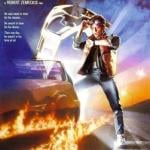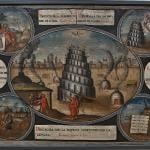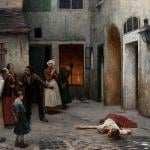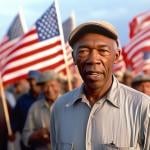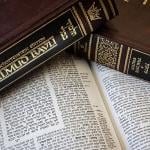BLOG/RELIEF: “And if you don’t know what a friend of Dorothy is, ask a policeman–or one in five Tory MPs.” Noli Irritare Leones gave to disaster relief, and asked for five gay-lit books you haven’t read, but you should.
My criteria here were kind of sketchy, so I ended up making a list of thirteen-ish books in all. The first five are books I’ve never discussed in depth on the blog. The next batch are ones I’ve written about before, some of which are only marginally gay-lit, and I’m just linking you to old reviews. Then there’s a bonus!
These first five are in rough order of when I read them, most recent last.
Leslie Feinberg, Stone Butch Blues. I wrote about this a bit here. It’s an autobiographical novel and it’s really hard to read, which is why you should read it. I read this almost 15 years ago and I still think about scenes from it when I try to interweave public policy and empathy.
Lillian Faderman, Surpassing the Love of Men: This is a basic, fairly early study of “romantic friendship” between women. It’s big and fat and full of terrific stories of accomplished women and the women they loved. It chronicles the growing anxiety over women’s love (see below for more)–women had a longer grace period than men in this respect, but Faderman points out how quickly people focused on women’s colleges, etc, as possible intro courses for lesbianism.
Faderman has been criticized (though not so much with this book as with e.g. Odd Girls and Twilight Lovers) for imposing a narrative which doesn’t really match or adequately empathize with and understand the experiences she’s describing. I don’t know to what extent that criticism is warranted. I found Surpassing the Love of Men really helpful, at the time I read it, for the way it showed eros and philia and agape as different but often coincidental and frequently shifting. It gave me a framework for understanding my own experiences of love and friendship; it pushed me to acknowledge that different cultural moments had understood sexuality in different ways, and therefore gave me a certain amount of skepticism about my own culture’s way of understanding the tangle of experiences we’ve decided to call “being gay”; and it gave me a degree of freedom, a kind of permission to say that sometimes what I felt was eros and sometimes it was philia and sometimes I wasn’t sure, or it changed from day to day, or it was complicated.
(I wonder–and this isn’t my bailiwick, but here goes–whether Faderman’s perspective might be helpful to a lot of teens, guy and girl, who are made by their peers and their culture to worry too much about what their love of same-sex friends might mean. I don’t know if she’d give them breathing room, or spook them utterly. But I guess I’d recommend her to parents, at least, on the grounds that your kid might be going through something complicated, and it’s okay to spend some time with the complications, whatever the end result is. Like, don’t assume that your kids’ same-sex attractions are “just” [just??] intense friendship, but also don’t assume that they’re sexual–just be ready to accept that either one might be the case, and you’ll have to work with that….)
Stephen Fry, The Liar. I don’t really know what to say about this except that it’s the funniest book I’ve ever read, full stop. It’s on this list because Ratty is the only straight person I’ve ever known who has found this book as heartbreakingly hilarious–or vice versa–as I do. I honestly can’t explain it. Read the first few paragraphs of the novel (chapter 1, not the prologue–the bit in the changing room, with Anthony, the peg) and if you want more, I can guarantee you are in for an exceptional treat.
Andrew Sullivan, Love Undetectable: Essays on Sex, Friendship, and Survival. This is by far the best thing Sullivan’s written; it galls me that it’s also one of his relatively lesser-known books. I don’t fully remember his stuff about confronting and refuting Christian and/or psychoanalytic rejections of homosexual acts–I vaguely remember that it was strident and unsatisfying. I don’t care. The essay on friendship in the face of AIDS is alone worth the price of admission. The depictions of the epidemic, and of gay self-image before and during and after, are amazing.
This book poses philosophical problems that will still be with us “when men are fairy tales in books written by rabbits”–and yet those problems, of understanding and negotiating friendship and loss, are as immediate as the Weakerthans’ last album. Parts of this book can be read with Augustine. ‘Nuff said, you know?
Frederick Roden, Same-Sex Desire in Victorian Religious Culture. Read on recommendation from Helen Rittelmeyer; and yeah, she’s right. This book traces the development of experiences and artistic expressions of same-sex love from relative innocence to painful anxiety. It illuminates a world where to be Catholic was to be sexually suspect–I can only imagine the glee with which Roden discovered the term “Romophobia” used in his subjects’ letters!–and where the sensuality and attention to la difference of Catholicism made my Church a natural home for the queer of both sexes.
OK, Roden has some tics of his time and place. He thinks he’s paying unusual attention to the reality of religious experience–he thinks that other academics read religious ecstasy as a less-interesting version of sexual ecstasy, but he knows better–but, you know, “better” is relative. Compared to many contemporary academics, he’s extraordinarily Cath-symp! But he still falls into the trap where you want to smack him and say, “Something is not always a phallus just because it’s longer than it is wide!” The wounds of Christ… sometimes more interesting when they’re wounds of Christ, not vaginal symbolism.
So yeah, you have to put up with some of that. But in return you get quotations of terrific poetry and sermons (I discovered Eliza Kearny through this book, and also realized that G.M. Hopkins’s sermons are more to my taste than most of his poetry), and an entire way of life in which to be queer and Catholic was in some strange, important, fleeting ways intuitive.
I think that’s still true; so I loved this book to little sparkly bits.
(Apparently it’s “available on GoogleBooks,” whatever that means. I’m writing this with an archaeopteryx quill.)
Now here are the books I’ve written about before, in order from most to least gay-lit, as a genre.
Kiriko Nananan, Blue. If you love the sub-genre of “aching adolescence” as much as I do, you owe it to yourself to check out this absolutely beautiful, subtle manga.
Derek Jarman, various. Demi-recommended.
Edmund White, Nocturnes for the King of Naples. Incredibly highly recommended.
Christopher Bram, Exiles in America. Demi-recommended.
Rebecca Brown, The Terrible Girls. Highly recommended.
The opera of “Death in Venice.” Heh-heh-heh.
Pat Barker’s WWI books. Low on the list because she doesn’t quite fit the genre, even though there’s gaiety for those who’d want it. Demi-recommended.
And, last but also last, the heterotextuality of Anna Karenina!






